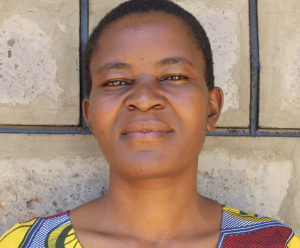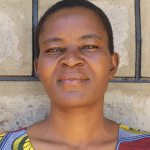The water of Nelima Spring is making Muhoni Community's 185 people sick.
People we interviewed told us all kinds of stories about how the spring is mistreated. People urinate in the bushes surrounding the water point. Children play and bathe in the water they later drink. When we visited, a dirty shoe was floating on the spring's surface.
But even without these issues, the unprotected spring's water would still be unsafe for human consumption.

When we asked 66-year-old farmer Agness Ayuma how the water situation affects her, she said, "[I] am personally affected because, since last year, [I] have been sick and [I] am still sick. I was discovered to be having amoeba, which is expensive to treat, and I don't have money, so the current water situation has really affected me and my family."
Amoeba is a colloquial term describing a specific type of waterborne parasite common in tropical regions. According to the CDC, only 10-20% of people infected with amoeba exhibit symptoms, which makes Agnes particularly unlucky.
Some 842,000 people are estimated to die each year from diarrhea as a result of unsafe drinking-water, sanitation and hand hygiene. - WHO
But, believe it or not, illness from drinking the contaminated water is not Muhoni's only water issue. The bushy area around the spring harbors snakes, scorpions, and other critters that frighten the community's children and pose serious dangers to their health.

"The area around the spring is so bushy," said 14-year-old Brian A (in the above photo). "This makes me fear going to the spring a lot. I have to wait for an adult to fetch [water]."
A protected spring will not only provide Muhoni's people with safe drinking water, but it will also make a time-consuming, fear-inducing chore into an easy trip they can make any time.
What We Can Do:
Spring Protection
Protecting the spring will help provide access to cleaner and safer water and reduce the time people have to spend to fetch it. Construction will keep surface runoff and other contaminants out of the water. With the community’s high involvement in the process, there should be a good sense of responsibility and ownership for the new clean water source.
Fetching water is a task predominantly carried out by women and young girls. Protecting the spring and offering training and support will, therefore, help empower the female members of the community by freeing up more of their time and energy to engage and invest in income-generating activities and their education.
Training on Health, Hygiene, COVID-19, and More
To hold trainings during the pandemic, we work closely with both community leaders and the local government to approve small groups to attend training. We ask community leaders to invite a select yet representative group of people to attend training who will then act as ambassadors to the rest of the community to share what they learn. We also communicate our expectations of physical distancing and wearing masks for all who choose to attend.
The training will focus on improved hygiene, health, and sanitation habits in this community. We will also have a dedicated session on COVID-19 symptoms, transmission routes, and prevention best practices.
With the community’s input, we will identify key leverage points where they can alter their practices at the personal, household, and community levels to affect change. This training will help to ensure participants have the knowledge they need about healthy practices and their importance to make the most of their water point as soon as water is flowing.
Our team of facilitators will use a variety of methods to train community members. Some of these methods include participatory hygiene and sanitation transformation, asset-based community development, group discussions, handouts, and demonstrations at the spring.
One of the most important issues we plan to cover is the handling, storage, and treatment of water. Having a clean water source will be extremely helpful, but it is useless if water gets contaminated by the time it is consumed. We and the community strongly believe that all of these components will work together to improve living standards here, which will help to unlock the potential for these community members to live better, healthier lives.
We will then conduct a small series of follow-up trainings before transitioning to our regularly scheduled support visits throughout the year.
Training will result in the formation of a water user committee, elected by their peers, that will oversee the operations and maintenance of the spring. The committee will enforce proper behavior around the spring and delegate tasks that will help preserve the site, such as building a fence and digging proper drainage channels. The fence will keep out destructive animals and unwanted waste, and the drainage will keep the area’s mosquito population at a minimum.

 Protected Spring
Protected Spring
 Rehabilitation Project
Rehabilitation Project



































